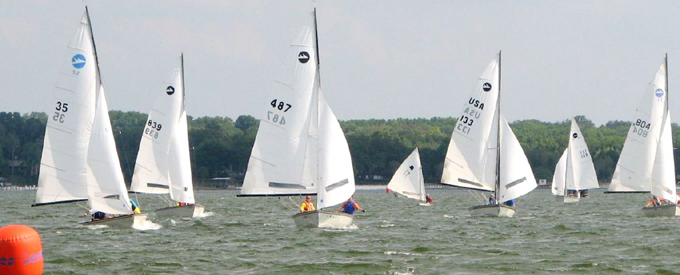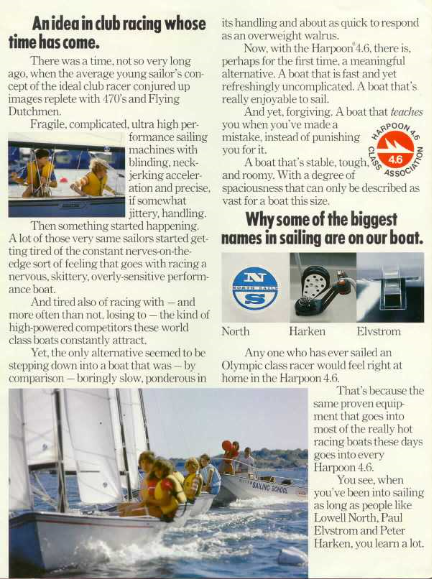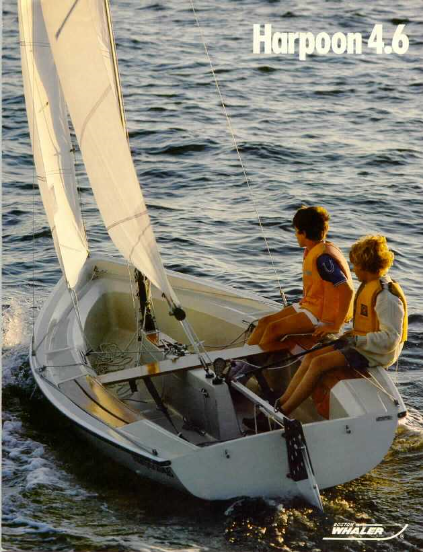- Classes for ages 8 to 17
- One week sessions 9 am to 12 noon or 1 pm to 4 pm Monday through Friday
- Offered the weeks of June 19 through August 18, 2017
- Cost is $150 per one week session (morning or afternoon)
- All classes are taught by U.S. Sailing certified instructors
- Call 989-513-3251 or email for information
- Instruction offered using Opti prams, Boston Whaler Harpoon 4.6 trainers or sunfish
Youth Sailing Classes beginning June 19, 2017 conducted on Tawas Bay
Safety Suggestions by Beth A. Leonard from Boat US Seaworthy dated July 2013.
In general ESD victims are good candidates for successful Cardiopulmonary Resuscitation (CPR). Learn to perform CPR and maintain your training. To retrieve a person in the water, reach, throw, and row, but don’t go. Tell others about ESD. Most people have never heard of it and are unaware of the danger. Make sure your children understand the importance of not swimming anywhere there could be electricity. Don’t let them roughhouse on docks. Tell them what to do if they feel a tingling or shock in the water (see below). NEVER swim within 100 yards of any freshwater marina or boatyard. Talk to marina owners or operators about the danger of ESD. Ask your marina operator to prohibit swimming at their facility and post signs. Ask marina operators if they are aware of and following the guidelines from NFPA 303 (Fire Protection Standard for Marinas and Boatyards) and National Electric Code (NEC) 555. Have your boat tested once a year to see if it is leaking electricity, or buy a clamp meter and test it yourself. If you find any problems, have your boat inspected by a qualified electrician trained to ABYC standards. Have a qualified ABYC electrician install an ELCI on your boat (refer them to the ABYC E-11 Standard) or use an ELCI in the shore power cord. As an alternative, install an isolation transformer on the boat. Test the GFCI/ELCI at least once a month or per the manufacturer’s specifications. DO NOT do your own 120-volt AC electrical work on a boat or hire an electrician who is not familiar with ABYC standards to do it. Many of the problems that lead to electrical faults result from the differences between shore and boat electrical systems and standards. DO NOT use common household extension cords for providing shore power to your boat. Use, and encourage other boaters to use, shore power cords built to UL standards. NEVER dive on your boat to work on underwater fittings when it is plugged in to shore power, even in saltwater. NEVER swim within 100 yards of ANY dock using electrical power! If you have not electrified your dock or put an AC system on your boat, weigh the risks carefully before doing so. If you need electricity on your dock, hire a licensed electrician and make sure the wiring meets the requirements in NFPA 303 and NEC 555. If your dock is already wired, hire an electrician to check that it was done properly. Because docks are exposed to the elements, their electrical systems should be inspected at least once a year. Exercise your GFCIs/ELCIs as recommended by the manufacturer. If you normally run a power cord from your house or garage to charge your batteries, make sure the outlet has a GFCI and include an ELCI somewhere in the shore power cord. NEVER swim off your dock without shutting down all shore power to the boat and the dock. Even if you adhere to all of these rules, nearby docks can still present a shock hazard. Educate your neighbors and work together with them to make the waterfront safe. If you are in the water and feel tingling or shocks DO NOT follow your instinct to swim toward the dock! SHOUT! Drowning victims cannot speak, let alone shout. Let everyone know what’s happening so they’ll understand the danger and react appropriately. Try to stay upright and back out of the area the way you came, warn any other swimmers in the area of the danger, and then head for shore 100 yards or more from the dock. Alert the dock or marina owner and tell them to shut the power off to the dock until they locate the problem and correct it. Go to the hospital to make sure there are no lingering effects that could be dangerous Know how to distinguish drowning from ESD (see Alert for how to recognize “normal” drowning; tingling, numbness, or pain all indicate ESD). Fight the instinct to enter the water — many rescuers have died trying to help ESD victims. Call for help. Use 911 or VHF Channel 16 as appropriate. Turn off the shore power connection at the meter base and/or unplug shore power cords. Get the victim out of the water. Remember to reach, throw, row, but don’t go. If the person is not breathing or you cannot get a pulse, perform CPR until the Fire Department, Coast Guard, or ambulance arrives. (The full article is linked 4th spot down to the right)




